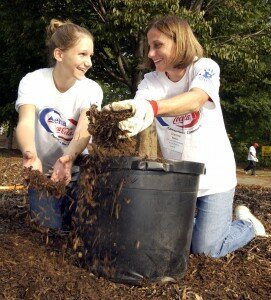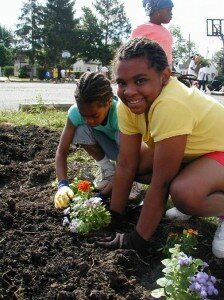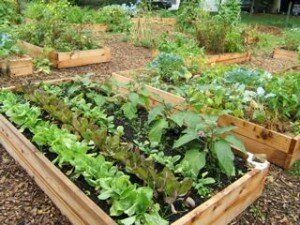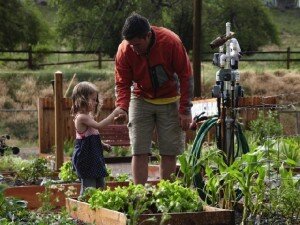 Why do you volunteer? Many volunteer for selfless reasons, but service can do so much good for the volunteer too! Consider volunteering more often to help others in your communities, social circles, and life, not only for all the wonderful benefits that come from spreading kindness, but also for the great benefits that people experience when they help others.
Why do you volunteer? Many volunteer for selfless reasons, but service can do so much good for the volunteer too! Consider volunteering more often to help others in your communities, social circles, and life, not only for all the wonderful benefits that come from spreading kindness, but also for the great benefits that people experience when they help others.
Research, observation, and possibly even your own experiences agree that helping others, altruism and finding meaning in life all have their hand in stress management. While donating your time or unneeded possessions doesn’t always solve your problems or ameliorate your stressors, acts of kindness and volunteer work can provide the following positive effects:
- A good feeling about oneself. Having a positive sense of self can actually help you feel less reactive to stress, and bring more enjoyment to all of your activities.
- A feeling of connection to others. Having a sense of community, a supportive circle of friends and other forms of social support can increase your resilience as well as your longevity and quality of life.
- A sense of meaning and greater purpose in one’s life. Having a greater sense of meaning can help stressors seem more manageable, feel less threatening and be less likely to trigger your stress response.
- Perspective about one’s stressors–others may have greater problems. Having a change of perspective can help your stressors seem much smaller to you, and may help you realize that you have more control in life and more options than you realized.
- A reminder to feel gratitude. When you’re feeling more gratitude about what you do have, your whole life feels better, and those things that you lack seem less important, less stressful.
- An opportunity to use one’s own unique gifts. Especially if you’re battling burnout or in a job that doesn’t thrill you, it’s important to have outside activities that ‘feed your soul’, that challenge you in ways that make you feel alive. Often, volunteer opportunities can provide that, while you provide others with gifts that they can really use as well.
- Something to think about other than one’s stress! Distraction can be a beautiful thing, and distraction from stress can give your body a chance to recover from chronic stress and feel healthy and calm again.
 All of these effects can help with stress management, and are reasons to continue to volunteer throughout the year! Consider starting with small things that will still make a big difference to someone in need; do to what you can, rather than thinking that you’re too busy to make a real difference! Are you a regular volunteer, or do you plan to do something to help others this weekend? Share your good deeds in the comments below.
All of these effects can help with stress management, and are reasons to continue to volunteer throughout the year! Consider starting with small things that will still make a big difference to someone in need; do to what you can, rather than thinking that you’re too busy to make a real difference! Are you a regular volunteer, or do you plan to do something to help others this weekend? Share your good deeds in the comments below.



 ulates your community’s economy. Since money remains in your community, your community becomes more desirable to potential residents and businesses.
ulates your community’s economy. Since money remains in your community, your community becomes more desirable to potential residents and businesses.

 March is a month full of fun and sometimes interesting holidays March is not only a time to celebrate National Noodle Month, but it is also
March is a month full of fun and sometimes interesting holidays March is not only a time to celebrate National Noodle Month, but it is also 
 We hope that these suggestions will help you become more prepared for any emergency that may come your way. Make sure you stay informed on your community’s weather and health conditions so that you may be ready for all types of disasters. It is important to celebrate everything the Red Cross does to help the community by adopting their practices in your own routine. Get out and stay prepared today!
We hope that these suggestions will help you become more prepared for any emergency that may come your way. Make sure you stay informed on your community’s weather and health conditions so that you may be ready for all types of disasters. It is important to celebrate everything the Red Cross does to help the community by adopting their practices in your own routine. Get out and stay prepared today! Today at
Today at  to play a role in the garden activities. These members will be vital in funding the garden, keeping up with its maintenance, and planning events.
to play a role in the garden activities. These members will be vital in funding the garden, keeping up with its maintenance, and planning events.
 exchange phone numbers or email addresses, it is important that all members can get in touch with each other in case anything comes up. It will also help maintain that sense of community between all those involved!
exchange phone numbers or email addresses, it is important that all members can get in touch with each other in case anything comes up. It will also help maintain that sense of community between all those involved!


 Happy World Water Day! It only makes sense that element that we rely on for life itself should have its very own day. World Water Day was instituted by the United Nations to remind us that much of the world still faces a global water, sanitation and hygiene crisis, and that it is our urgent obligation to act.
Happy World Water Day! It only makes sense that element that we rely on for life itself should have its very own day. World Water Day was instituted by the United Nations to remind us that much of the world still faces a global water, sanitation and hygiene crisis, and that it is our urgent obligation to act.
 utt clean-up! Do you constantly see cigarette butts thrown on sidewalks, parks, beaches and other public property? Are you sick of this unnecessary litter? Well, this activity is just for you! You can organize a cigarette butt clean-up to raise awareness of the effects of discarded cigarette butts! Gather volunteers and Collect cigarette butts in garbage bags and count them along the way. Make sure everyone wears gloves!
utt clean-up! Do you constantly see cigarette butts thrown on sidewalks, parks, beaches and other public property? Are you sick of this unnecessary litter? Well, this activity is just for you! You can organize a cigarette butt clean-up to raise awareness of the effects of discarded cigarette butts! Gather volunteers and Collect cigarette butts in garbage bags and count them along the way. Make sure everyone wears gloves!
 The birds are chirping, bees are buzzing, flowers are blooming, and the pollen is everywhere. Today is the first day of spring! Goodbye cold weather and hello sunny days. Spring is a great time to have a new beginning by getting out and volunteering in your community.
The birds are chirping, bees are buzzing, flowers are blooming, and the pollen is everywhere. Today is the first day of spring! Goodbye cold weather and hello sunny days. Spring is a great time to have a new beginning by getting out and volunteering in your community. nt flowers, repair playgrounds, or pick up trash. Whatever you can do to beautify your park to make it more enjoyable will make a difference!
nt flowers, repair playgrounds, or pick up trash. Whatever you can do to beautify your park to make it more enjoyable will make a difference!

 and places musicians to serve full-time as teachers and mentors in low-performing public schools, youth centers, and other high-need community settings. MusicianCorps uses music to reengage youth in their academic and civic lives, and provide them skills to succeed in the 21st century economy.
and places musicians to serve full-time as teachers and mentors in low-performing public schools, youth centers, and other high-need community settings. MusicianCorps uses music to reengage youth in their academic and civic lives, and provide them skills to succeed in the 21st century economy.
 e. Recognizing his commitment, Mr. H invited Kevin and other students to perform for Veteran’s Day at the Palo Alto VA center. Kevin seized the opportunity. On a day off from school when most of his classmates were still sleeping, Kevin was awake at 7:30am with his guitar in hand ready to be picked up for the performance. “It was cool to play for the Veterans,” Kevin said. “They seemed to enjoy it and some of them came up and played with us.”
e. Recognizing his commitment, Mr. H invited Kevin and other students to perform for Veteran’s Day at the Palo Alto VA center. Kevin seized the opportunity. On a day off from school when most of his classmates were still sleeping, Kevin was awake at 7:30am with his guitar in hand ready to be picked up for the performance. “It was cool to play for the Veterans,” Kevin said. “They seemed to enjoy it and some of them came up and played with us.”
